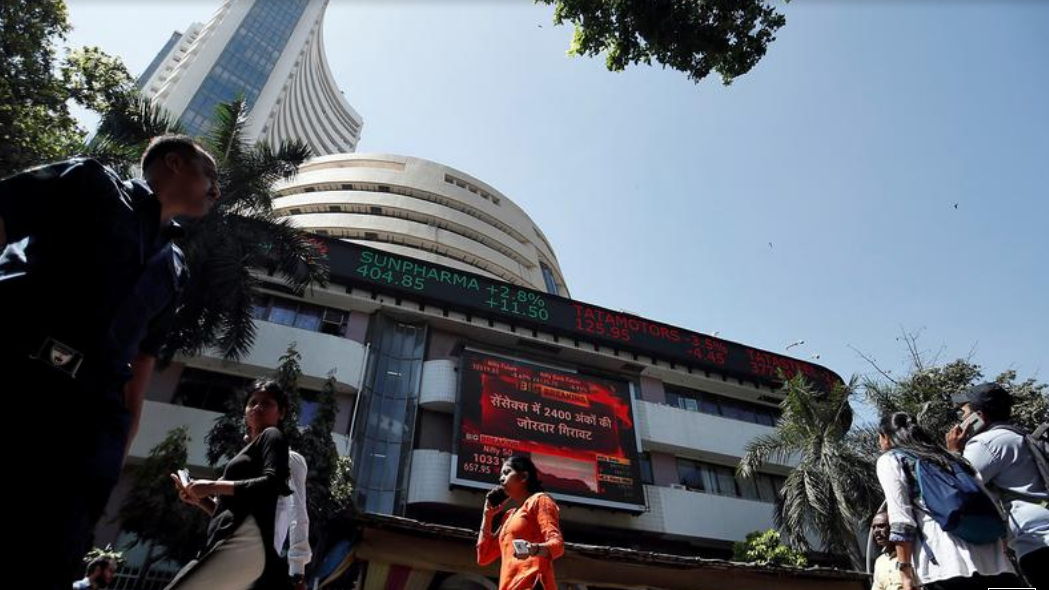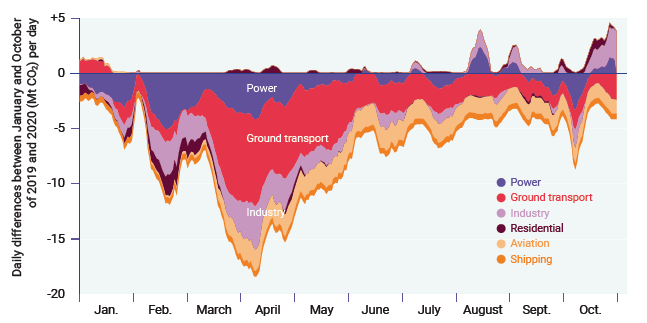
The novel coronavirus pandemic might have temporarily curtailed continually rising carbon dioxide emissions to a certain extent, but the reduction won't be enough to meet the climate agreement goals. Under such a scenario, a green COVID-19 recovery plan could help "slow" the climate crisis, according to a report by the United Nations.
As countries imposed lockdowns and travel restrictions to contain the transmission of the virus, the CO2 emissions decreased by about 7 percent in 2020, which can help reduce the global temperature by only 0.01 degrees Celsius.
Despite a dip, the present emission level is still high and puts the world on the path of a global temperature rise of 3 degrees Celsius, increasing the possibility of more extreme weather events, including wildfires, cyclones, floods and sea-level rise, warned the 11th UN Emission Gap Report 2020 released on Wednesday.
The annual report calculates the gap existing between actual emissions and levels required to meet the Paris Agreement goals to limit global temperature rise well below 2 degrees Celsius.
Ground transportation restriction as a part of lockdown contributed significantly to the decline in emission level, followed by the power and industrial sector in 2020. The overall decrease is much larger than 1.2 percent decline in emissions during the financial crisis in the late 2000s.
While CO2 emissions decreased significantly in 2020, atmospheric concentrations of other climate-warming greenhouse gases (GHG), including methane and nitrous oxide, increased in 2019 and 2020.
According to the report, the total GHG emissions in 2019, including land-use change, reached a new high of 59.1 gigatonnes of CO2 equivalent (GtCO2e). Land use for agriculture, forestry and associated activities emit nearly a quarter, amounting to almost 12 GtCO2e annual emissions.
In order to avert the climate crisis, the global emissions should be curtailed to 44 GtCO2e by 2030 to ensure a 66 percent chance of holding temperatures below 2 degrees Celsius.
Green COVID-19 recovery need of the hour
A thoughtful expenditure of more than $10 trillion stimulus package announced as a part of the COVID-19 recovery plan, the report said, could be crucial to deal with the climate crisis.

Reduction in emissions in 2020 relative to 2019 levels due to COVID-19 lockdowns. /UNEP
Reduction in emissions in 2020 relative to 2019 levels due to COVID-19 lockdowns. /UNEP
"A green pandemic recovery could cut up to 25 percent off the emissions we would expect to see in 2030 based on policies in place before COVID-19," stated the report. However, a major portion of the money, the report says, is likely to be utilized by carbon-intensive sectors to boost the economy.
"A green pandemic recovery can take a huge slice out of GHG emissions and help slow climate change," Inger Andersen, executive director of the United Nations Environment Programme (UNEP).
"I urge governments to back a green recovery in the next stage of COVID-19 fiscal interventions and raise significantly their climate ambitions in 2021," she said.
Read more: Planning for a green restart post-coronavirus
A green recovery plan could also help governments with their Nationally Determined Contribution (NDC)—efforts by each country to reduce emissions and adapt to the impacts of climate change. The NDCs announced by the countries are "woefully inadequate" and paves the path for a global temperature rise of 3.2 degrees Celsius.
At the same time, COVID-19 fiscal investments trackers found that only a few G20 members have initiated low-carbon rescue and recovery measures. Around one-quarter of G20 members have dedicated shares of their spending, up to 3 percent of their GDP, explicitly to low-carbon measures.
"For most, spending has been predominantly high carbon or neutral. In a number of cases, it is still unclear what effect countries' measures will have on GHG emissions," wrote the report.
Governments should support zero-emissions technologies and infrastructure, reduce fossil fuel subsidies, finance no new coal plants, and promote nature-based solutions. And also, fund large-scale landscape restoration and reforestation as a part of green recovery suggested by the report.
Researchers also called out the shipping and aviation sector responsible for 5 percent of global emissions to improve their fuel efficiency. "If current trends are continued, combined international emissions from shipping and aviation will likely consume between 60 and 220 percent of allowable CO2 emissions by 2050 under the 1.5 degrees Celsius scenario," said the report.
(Cover: People walk past the Bombay Stock Exchange (BSE) building in Mumbai, India, March 9, 2020. /Reuters)

